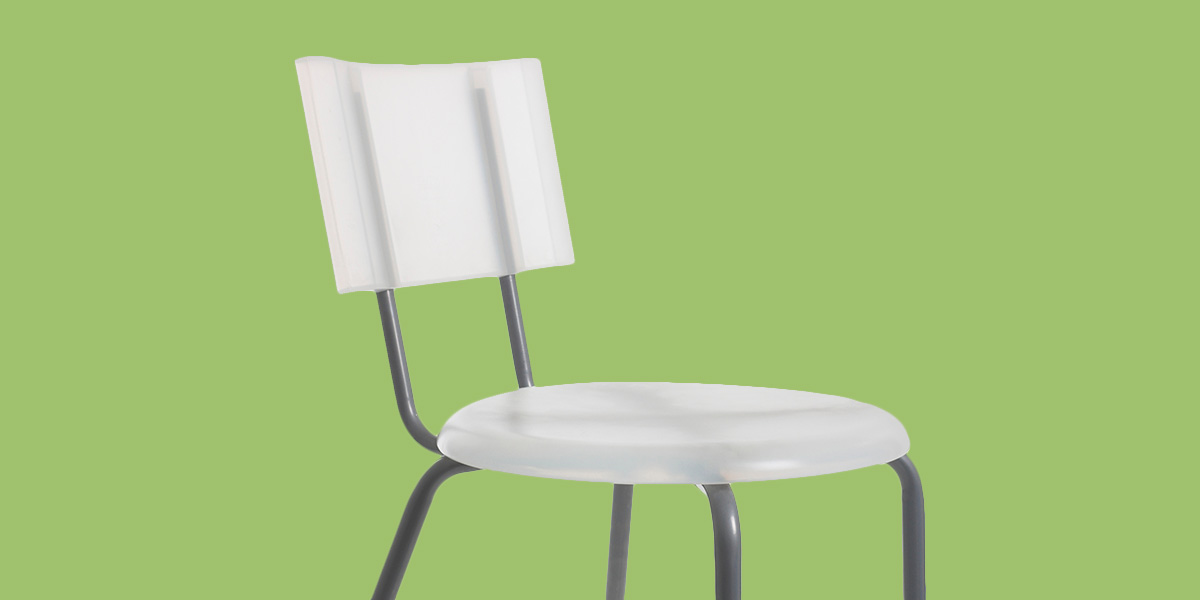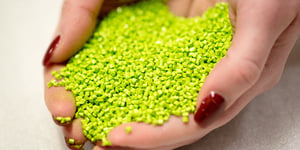The right choice of materials for a specific plastic product is one of the most crucial design decisions since all final product characteristics are tightly related to the material. The material significantly influences product aesthetics, functional characteristics, lifetime, environmental impact, and price. This is why we at Skaza dedicate a lot of time and energy to this important question: how to choose materials that enable us to create the best possible products? Let's take a look!
Download our e-book about the sustainable materials we use in our manufacturing process >>
How to choose materials for different product characteristics
When designing a new plastic product, we have to consider how different materials influence all aspects mentioned above of the product characteristics. The most important thing is that the material properties meet the functional requirements of a specific product. Therefore, the first step is to define product requirements and boundary conditions of use precisely.
Depending on the product, the material should meet many different possible requirements. Some products need to be transparent, while others need to be opaque. The former group of products can be produced only from amorphous materials, such as polystyrene, polymethylmethacrylate and polycarbonate. In contrast, the latter category of products can be made from amorphous and semi-crystalline materials, depending on the requirements.

Products that need to have tight dimensional tolerances are preferably produced from amorphous materials due to the lower shrinkage of these materials. In general, products that need to have good mechanical and thermal performance are preferably constructed from semi-crystalline materials.
All products have a specific demand for certain mechanical and thermal properties of the materials, such as modulus, strength, toughness and thermal resistance. For example, some products should have low stiffness and high toughness, while others should be very stiff but not necessarily very tough.
How to choose materials that ensure product aesthetics
Product aesthetics are also tightly related to the material choice. Certain materials can be used to manufacture products with a high gloss surface and/or good scratch resistance. In contrast, others are only useful for not directly visible products or for which aesthetics are not an important characteristic.
How to choose materials that meet different industries' requirements
Different applications, such as medical, electrical and electronic, food and automotive, also have their specific requirements. Medical and food products require using materials that are not harmful to the human body, while electrical and electronic products require materials with suitable electric properties and flame retardancy. In such applications, these properties are not only required, but materials also have to be certified according to a specific standard so that the product can be put on the market.

Material life expectancy is also a fundamental issue for many demanding applications. While material physical properties can be obtained from technical data sheets provided by the manufacturer or by relatively simple testing procedures, lifetime prediction is a much more complex topic that often requires the development of specialized testing protocols that usually include accelerated aging procedures, material testing and predictive modeling.
How to choose materials that offer the best value for money
When a set of materials that fulfill the product requirements is defined, the material is usually chosen based on its price and environmental impact. As a general rule, around 60% of the product's final price comes from the material price. The choice of material based on the price seems pretty straightforward at first glance, but it is actually a complicated process.
Various polymeric materials have different densities. While the material price is given per unit weight, the same product from denser material will weigh more, thus resulting in a higher price. Furthermore, the mechanical and thermal properties of polymers also indirectly influence the product's final cost. When choosing between two materials that differ in mechanical properties, it is important to consider that the product thickness may be reduced by using better-performing material. Reduced product thickness results not only in lower weight but also in decreased production times (due to faster cooling), thus further reducing the final cost of the products.
Material thermal properties also influence production costs, as some materials require higher processing temperature, which in turn results in increased energy consumption and thus higher costs.

How to choose materials that reduce the environment impact of the products
Last but not least, the material's environmental impact is also a very important factor to consider, especially in modern times in which the ecological burdens of plastic materials resulted in a strong push towards the use of more environmentally friendly materials. The environmental assessment of different materials is a complex task that we have focused on in more detail in another article.
At Plastika Skaza, we take the products' environmental impact very seriously and pay a lot of attention to it. This is why we are often willing to come to terms with a higher price of the product if that means being able to create a product with a lower environmental impact, while at the same time keeping all the essential functional characteristics.
How to choose materials that are the best fit for your product
A good choice of material requires a broad knowledge and experience in many different fields, such as product design, materials science, processing technologies, legislation, economics and environmental management. At Plastika Skaza, we have more than 40 years of experience in plastics manufacturing and combine experts from different fields that closely collaborate with each other as well as with experts from other institutions. This helps ensure not only the optimal choice of the material but also optimal product design and manufacturing technologies. Contact us, and we will be happy to advise you on how to choose the best materials and technologies for your product.
Find out more about how we incorporate sustainable materials into our production process. Fill in the form and download the e-book with educational content.


